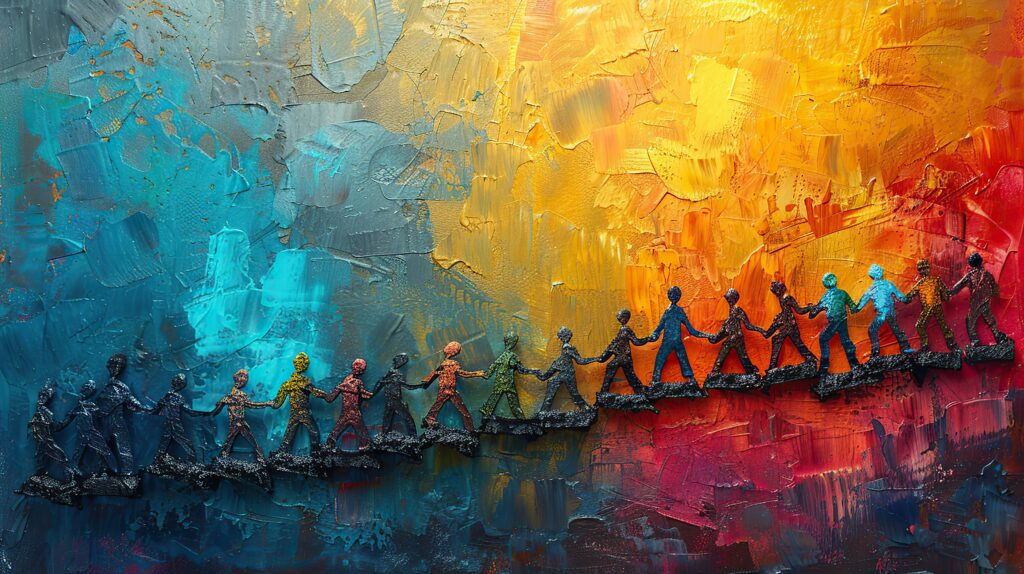The Illusions of Safety: How Fires, Floods, and Wars Impact the Daily Lives of Those in “Safe Zones”

Summary: No one is truly untouched in a world increasingly defined by its challenges—climate change, wildfires, droughts, and conflicts. While some regions experience these crises firsthand, others may seem to exist in “safe zones.” Yet, the ripple effects of these global issues profoundly influence even the most insulated communities. Here’s how these challenges seep into the daily lives of those living far from immediate danger.
Dear Dr. Sylvia,
What a crash course in change we are all getting now.
I am an optimist and I believe this year has many opportunities for us to grow and become our best selves.
However, my team at work and family members say they only see and expect difficulties.
How can I be a help agent for positive ways to express change without becoming “preachy?”
I think you are also an optimist. I bet that is why you talk about GLIMMERS.
Hope this is correct.
I wait to hear some ideas that can make a difference.
Best,
Cockeyed Optimist
How to Look for the Good in the Bad Days
Dear Cockeyed Optimist,
I must admit, I have my good days and also bad days.
The beginning of 2025 has been rough around our world.
From shootings in New Orleans and the bomb explosion in Las Vegas to fires in the Los Angeles area and the wars in Ukraine and the Middle East, the world does seem to be in a dark place.
In my leadership work, I talk about how “we are all connected, and no one wins unless we all do.”
Sometimes, it feels overly optimistic, and even like childish wishing.
Other times, it gives me the strength to keep encouraging others, as well as myself, to “keep on, keeping on.”
Here are some thoughts and a quote from an amazing teacher to guide us during these confusing times.
The Illusion of Safety is Just That, an Illusion
Safe zones often feel like havens, shielded from the physical devastation of wildfires, severe droughts, or the sounds of war.
However, globalization and interconnected ecosystems mean these problems rarely respect geographical boundaries.
From economic disruptions to mental health stress, the impact is more personal than it seems.
The Butterfly Effect is Real
It goes like this: when someone in India sneezes, someone in Indiana catches a bad cold (or vice versa).
Below are the long-range consequences of climate change that have been pushed to the side and human relations that have been ignored.
Economic Repercussions Ignore Boundaries
Rising Costs of Goods and Services
Climate change and wars disrupt supply chains, driving up the cost of essentials. For instance:
- Droughts reduce agricultural output, making food prices soar.
- Wars in key resource-producing regions, such as oil fields, increase energy costs.
- Wildfires destroy infrastructure, leading to expensive reconstruction efforts that trickle down to taxpayers.
Job Market Instability
Industries reliant on stable climates—like tourism, farming, and outdoor recreation—struggle to adapt, leading to job losses and wage stagnation.
Even the tech and finance sectors face indirect impacts, as economic instability affects investments and consumer spending.
Psychological Toll Impacts Everyone
Even without direct exposure, news of disasters and conflicts creates a pervasive sense of unease. Studies show that witnessing crises through media can lead to climate anxiety and compassion fatigue, making it harder to stay optimistic about the future.
- Parents worry about what kind of world their children will inherit.
- Young people question their career choices and life plans, wondering if they align with a sustainable future.
- Communities feel the strain of preparing for potential crises that seem increasingly inevitable.
Migration and Population Pressures
“Safe zones” often become destinations for displaced individuals escaping wildfires, droughts, or wars. While this migration enriches local culture and workforce diversity, it can strain resources like housing, healthcare, and schools.
Cities and towns may struggle to accommodate an influx of people, leading to rising rents and longer waits for essential services.
Environmental and Health Consequences are Everywhere
Air Quality Declines
Wildfires thousands of miles away can carry smoke and particulate matter, leading to hazardous air conditions. Even residents in “safe zones” may face an increase in respiratory illnesses, allergies, and reduced outdoor activities.
Water Scarcity
Droughts affect regional water supplies, prompting cities in unaffected areas to implement conservation measures. Water restrictions change everyday habits, from shorter showers to bans on watering lawns, reshaping how people think about this essential resource
We Cannot Escape Civic and Political Impact
Crises in other parts of the world often drive policy changes in safe zones:
Increased taxes to fund disaster relief or military aid.
Debates over renewable energy investments or immigration policies.
Polarization over how to address the root causes of these issues, from climate change to geopolitical tensions.
These shifts affect not only voting patterns but also community discussions, often leading to division or solidarity, depending on the context
Call to Action
The interconnected nature of today’s world means that “safe zones” are not truly immune to global crises. Those living in these areas have an opportunity—and arguably, a responsibility—to act as catalysts for change. Here’s how:
Support Sustainable Practices: Advocate for renewable energy, reduce waste, and support companies committed to environmental and social responsibility.
Engage Politically: Vote for leaders who prioritize climate action and humanitarian aid. Push for policies that prepare communities for potential population and resource pressures.
Build Resilient Communities: Foster relationships within neighborhoods to create support networks. Shared gardens, disaster preparedness groups, and local initiatives strengthen collective resilience.
Educate and Empathize: Understanding the stories behind climate refugees or war victims humanizes these issues and inspires acts of kindness.
While living in a “safe zone” may buffer you from the immediate physical effects of climate change, fires, droughts, or wars, it doesn’t grant immunity from their broader impacts.
Economic shifts, psychological strains, environmental changes, and political dynamics increasingly make these global crises a part of everyday life.
By recognizing these connections and taking proactive steps, those in safe zones can contribute to solutions that protect not only their own communities but the world at large.
Safe is not the absence of responsibility; it’s a place from which to lead the charge for a better future.
Here are some thoughts from the revered teacher, Ram Das
“I have often been asked whether this is the Aquarian Age, and it’s all just beginning, or if this is Armageddon, and this is the end. And I have to admit, I don’t know. My work is to quiet my mind, open my heart, and relieve suffering wherever I find it.”
Think about this and do your best to help those who need your support.
To your success,
Sylvia Lafair
PS. Need some help? Our coaches are ready to listen and encourage. These are times to care for each other, and there is no charge. Contact us now. Ready for a challenge? Register now for our FREE 7-day Stress Reducer Challenge starting January 20th!


